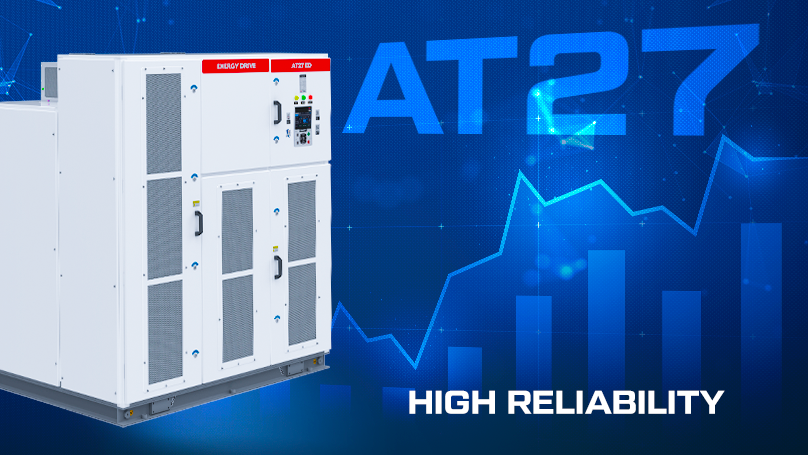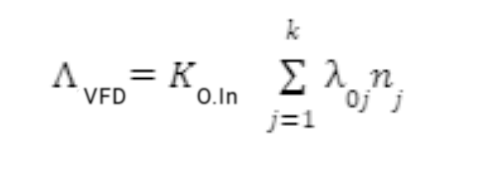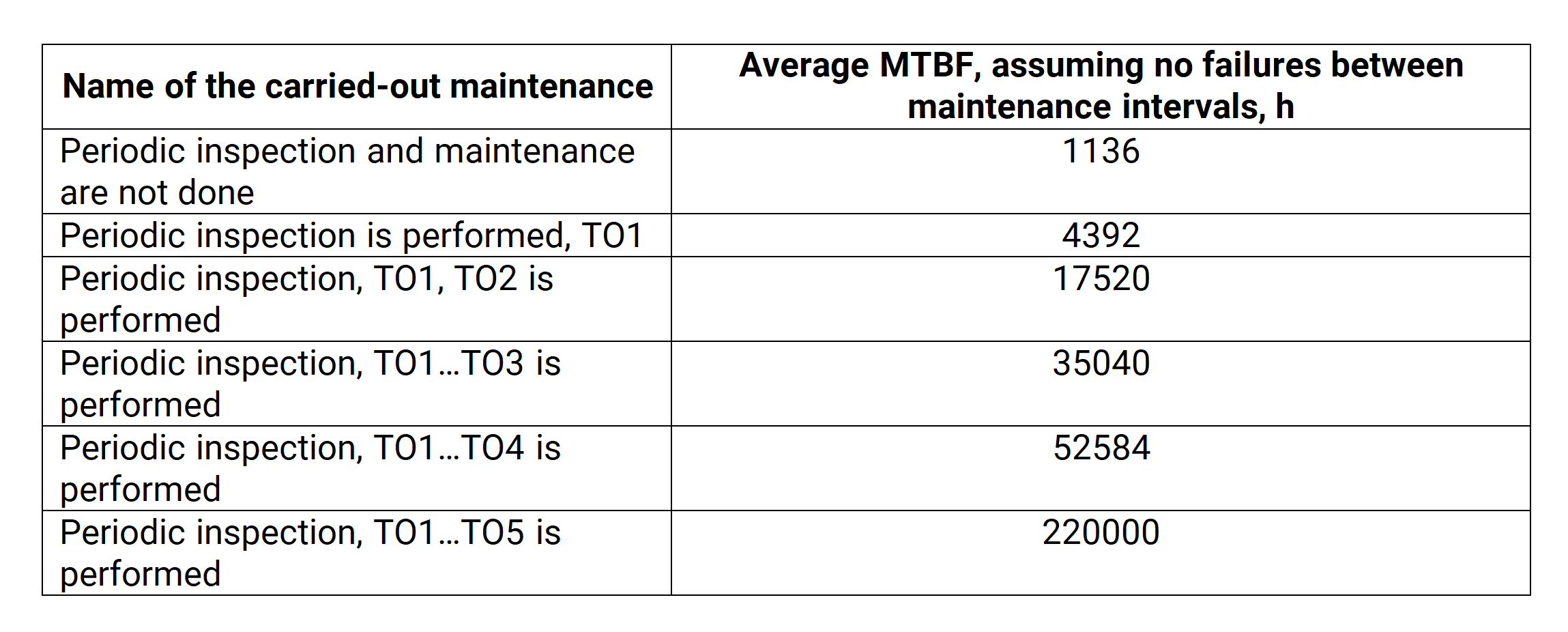
The reliability and failure-free operation of any equipment is a key indicator for any customer when making a decision about a major purchase. It is essential when purchasing expensive equipment involved in the technological process, where the cost of unauthorized (emergency) stops can exceed the cost of the equipment.
Today several basic indicators determine equipment reliability, but the most common and understandable to the end-user is the MTBF (mean time between failures).
For a variable frequency drive, this value is defined as:
Tav=1VFD (1)
Where:
ТAV – average mean time between failures, h;
ΛVFD – total variable frequency drive failure rate, 1/h,
Where the total intensity of the VFD is determined by:
 (2)
(2)
Where: λо j – is the group average failure rate of elements of the j-th group, j = 1, ..., k; k – the number of formed groups of similar elements; nj – number of elements in the j-th group, j = 1, ..., k; and Кo.In. – Correction factor, taking into account operating conditions, for operating conditions in general industrial premises is taken to be equal to 1.1.
As can be seen from relations (1) and (2), the average MTBF of a VFD is inversely proportional to the number of components and directly proportional to the MTBF of each component of the VFD.
In other words, in order for a frequency drive to be highly reliable, it is necessary to:
- contain in its design the minimum possible number of components;
- have all components with the highest possible MTBF.
Due to the specific architecture of the AT27, its power circuit contains a large number of components, which complicates the task of achieving high-reliability indicators, and the quantity of components included in the control system is tens of thousands (including passive and active electronic components of the electronics).
But in spite of the above, the AT27 has high reliability and high MTBF, which it was possible to achieve thanks to:
- The use of reliable semiconductor devices of classes 17-18.
- The use of high-reliability polypropylene capacitors in power cells, which allowed it to achieve an average MTBF of at least 100,000 hours;
- The use of aluminum-polymer capacitors instead of electrolytic capacitors, which made it possible to achieve an average MTBF of at least 100,000 hours for all electronic units;
- The use of high-reliability air-cooling system fans;
- Redundant (optional) the air-cooling system;
- Bypassing (optional) failed power cells.
- The application of a special VFD service methodology.
The AT27 series VFD has been proven to achieve high reliability through timely maintenance of equipment. The absence of any maintenance can lead to periodic machine stoppages for the following reasons:
- The air filters are clogged with dust;
- Bolt and terminal connections are not tightened; and
- Breakdown by dust accumulated in cabinets.
These are the top three most common causes of failure of mechanisms using the Triol AT27, associated with untimely maintenance of the equipment. As can be seen from Table 1, periodic inspection and control of the technical condition of the frequency converter greatly affects the MTBF of the equipment, as preventive elimination of problems associated with the operation of equipment allows one to cut off a large amount of potential failures that develop in the long-term.

Failure to implement the whole set of measures related to the maintenance of Triol AT27 VFD significantly reduces the mean time between failures, while the whole set of maintenance work raises this figure to 220 thousand hours! This figure corresponds to 25 years of trouble-free operation of the VFD, which is noticeably longer than the obsolescence period of such equipment.
Triol AT27 series medium voltage VFD is highly reliable equipment, which can serve for a long and trouble-free period, throughout the life cycle of the machine. Achieving the maximum value of this indicator is possible, including through responsible attitude during operation and compliance with the requirements set out in the service book and the VFD manual.
subscribe.el.title
- Product news
- Events
- Discounts
 1(405)6157755 (Business)
1(405)6157755 (Business)


 Google
Google







